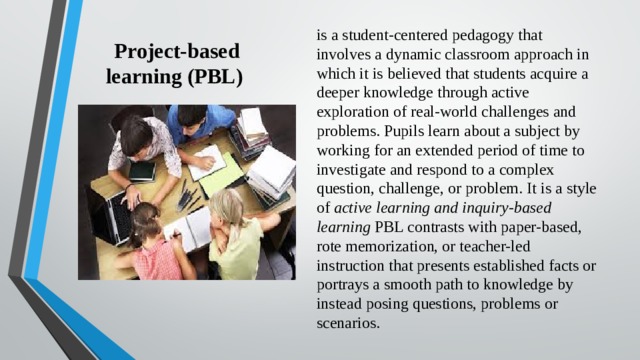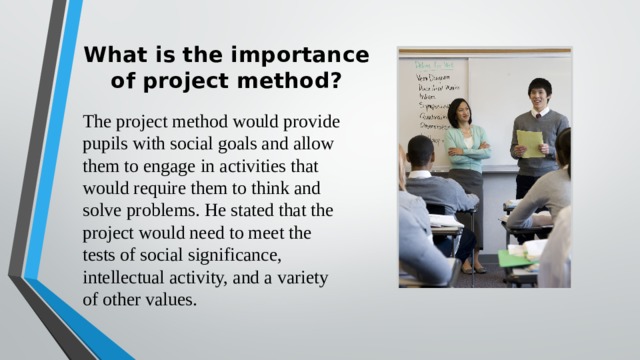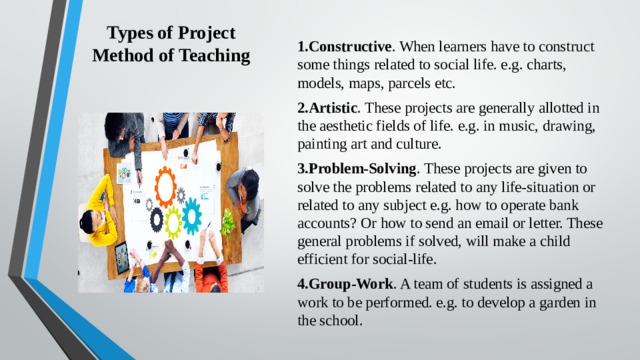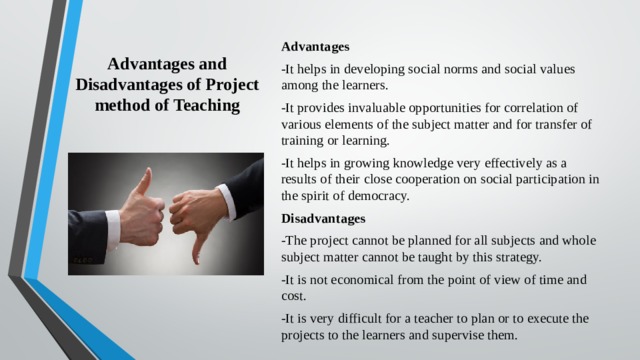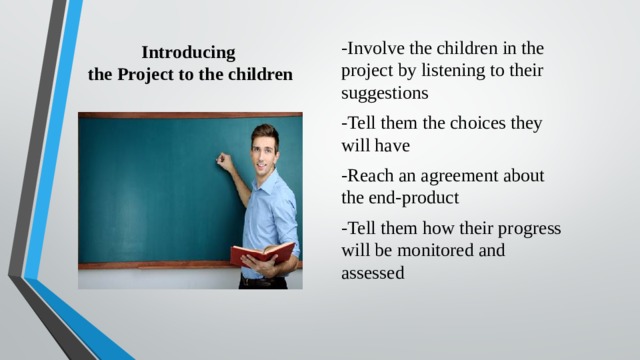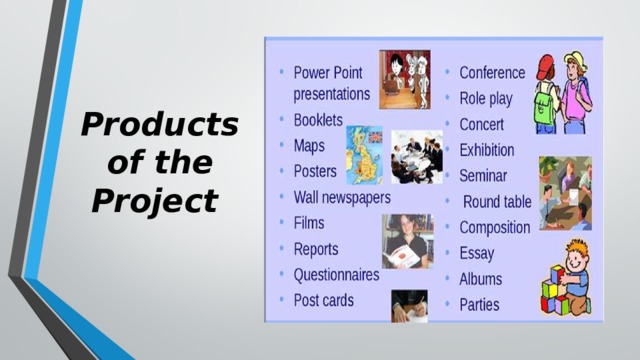This project method would provide pupils with social goals and allow them to engage in activities that would require them to think and solve problems.
Создайте Ваш сайт учителя Видеоуроки Олимпиады Вебинары для учителей
“Project-Based Learning (PBL) method in teaching English”
Вы уже знаете о суперспособностях современного учителя?
Тратить минимум сил на подготовку и проведение уроков.
Быстро и объективно проверять знания учащихся.
Сделать изучение нового материала максимально понятным.
Избавить себя от подбора заданий и их проверки после уроков.
Наладить дисциплину на своих уроках.
Получить возможность работать творчески.
Просмотр содержимого документа
«“Project-Based Learning (PBL) method in teaching English”»
Полезное для учителя
Распродажа видеоуроков!
1600 руб.
2660 руб.
1850 руб.
3080 руб.
1690 руб.
2820 руб.
1660 руб.
2770 руб.
ПОЛУЧИТЕ СВИДЕТЕЛЬСТВО МГНОВЕННО
* Свидетельство о публикации выдается БЕСПЛАТНО, СРАЗУ же после добавления Вами Вашей работы на сайт
Удобный поиск материалов для учителей
Проверка свидетельства

